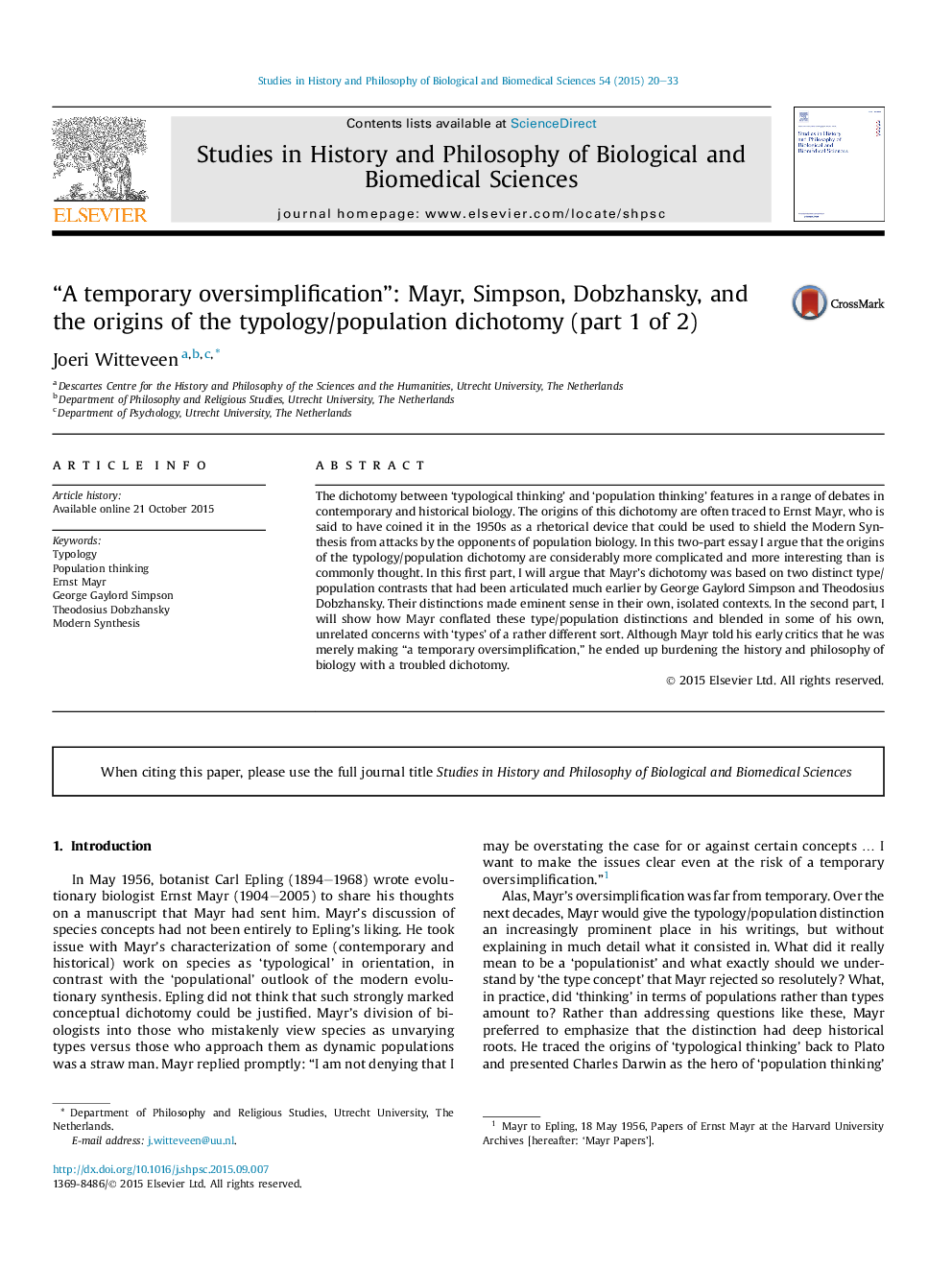| کد مقاله | کد نشریه | سال انتشار | مقاله انگلیسی | نسخه تمام متن |
|---|---|---|---|---|
| 1162158 | 1490511 | 2015 | 14 صفحه PDF | دانلود رایگان |
• The origins of the type/population dichotomy are traced.
• This dichotomy did not originate with Ernst Mayr, as is commonly thought.
• Early type/population distinctions by Simpson and Dobzhansky are explicated.
• It is argued that Mayr confounded these independently meaningful distinctions.
• The role of the type/population distinction in the Coon Controversy is discussed.
The dichotomy between ‘typological thinking’ and ‘population thinking’ features in a range of debates in contemporary and historical biology. The origins of this dichotomy are often traced to Ernst Mayr, who is said to have coined it in the 1950s as a rhetorical device that could be used to shield the Modern Synthesis from attacks by the opponents of population biology. In this two-part essay I argue that the origins of the typology/population dichotomy are considerably more complicated and more interesting than is commonly thought. In this first part, I will argue that Mayr's dichotomy was based on two distinct type/population contrasts that had been articulated much earlier by George Gaylord Simpson and Theodosius Dobzhansky. Their distinctions made eminent sense in their own, isolated contexts. In the second part, I will show how Mayr conflated these type/population distinctions and blended in some of his own, unrelated concerns with ‘types’ of a rather different sort. Although Mayr told his early critics that he was merely making “a temporary oversimplification,” he ended up burdening the history and philosophy of biology with a troubled dichotomy.
Journal: Studies in History and Philosophy of Science Part C: Studies in History and Philosophy of Biological and Biomedical Sciences - Volume 54, December 2015, Pages 20–33
